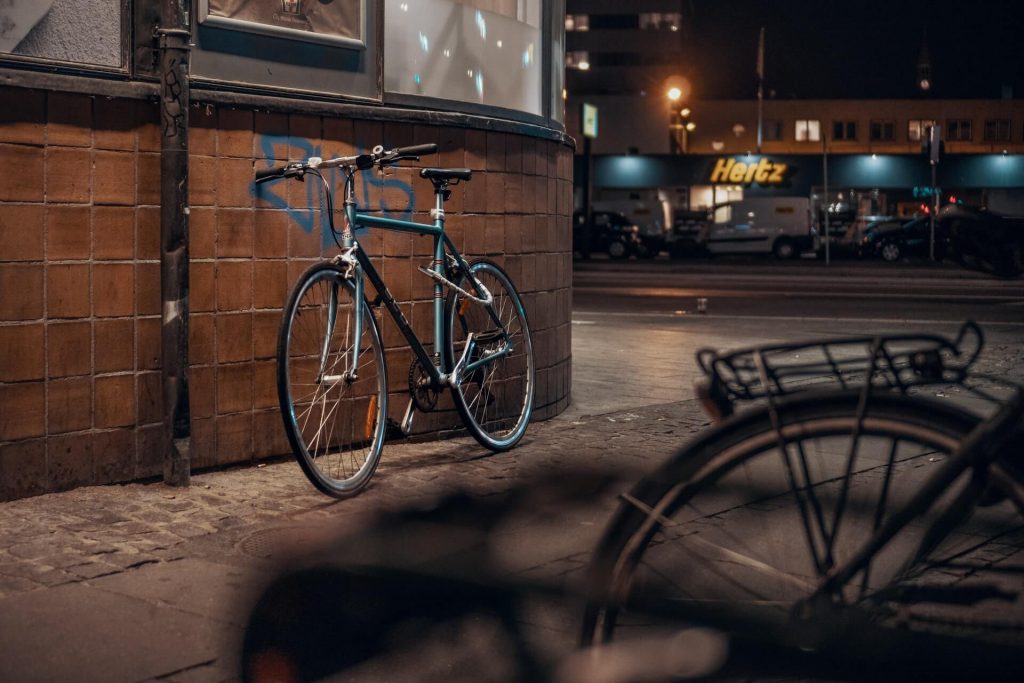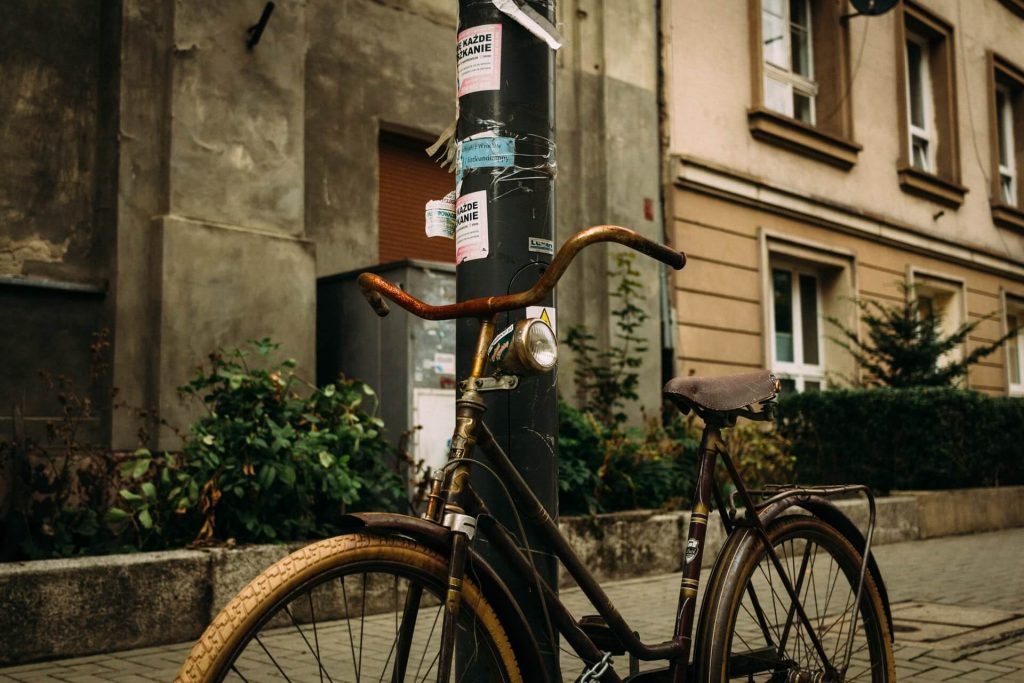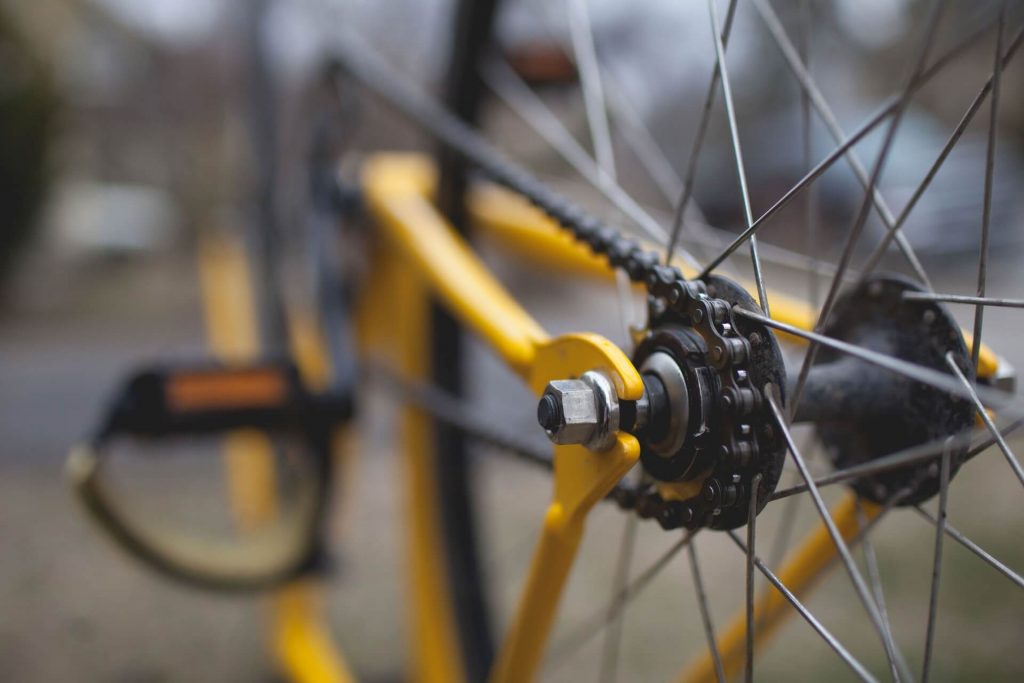Is your family or landlord objecting to you storing your bike inside? Well, plead no more. Keeping it inside would be an easier choice, but storing it outside is a great challenge for the ones who are up for it. The stakes are high, sure, but we’ve got tons of tricks up our sleeves to help you store it as neatly and safely as possible.
Can You Store a Bike Outside?
Storing a bike outside is an option for those who simply don’t want to store it inside or don’t have another choice. Whatever the cause may be, there are many ways and places to store your bike outside and tips to help preserve your bike parts for as long as possible.
How to Store a Bike Outside?

So how do you store a bike outside? Well, aside from the obvious fact that you have to lock it, your bike needs to be covered with some sort of exterior item to protect it. Not just protect it from thieves but from nature itself. There are different types of covers for your bike, all of which are popular and available for you to purchase or build.
Bike covers
If you’re planning to store your bike outside for more than a few days, bike covers might be your best option. They come with a special material that prevents your bike from being damaged by factors such as moisture, sunlight, and dirt. All of these factors play a huge role in creating rust in your bike, and bike covers will help prevent that.
Bike tents
Another great option is the bike tent. Not only is it affordable, but it’s quite a popular choice to store your bike outside. The extra space in the tent is an advantage because you can leave some of your bike safety gear which will save time when you’re going out for a bike ride.
Bike sheds
Bike sheds might be the most expensive choice out of the three, but they’re also the safest too. Once you store your bike inside, you can get a lock for your shed to protect it from potential thieves. They come in plastic, metal, and wood. So the good news is that they can last you for a long time since they’re like your bike’s very own house. And if you’re feeling a little creative, you can even build your own wooden shed.
Drawbacks of Outside Bike Storage

Unfortunately, storing your bike outside does have its downsides. Aside from the fact that it can make it easier for thieves to do their thing, your bike’s parts can suffer too if you don’t store it outside properly or leave it out for too many days.
The bike might corrode
During low temperatures, your bike is in danger of becoming rusty. Due to the moisture in the air from the rain and snow, the metal on your bike is very likely to start rusting. This is why it is crucial for you to store your bike somewhere safe where these temperature factors do not attack your bike.
The colors might fade
Hot weather is also one of the times where your bike needs protection more than ever. The sun’s ultraviolet rays are the cause of fading colors, and your bike’s colors are no exception. If you want your bike to look new for as long as possible, keep it outside of the sun when you’re not using it.
The plastic of the bike might degrade
Your bike’s plastic is oxidized by the sunlight and will eventually degrade if it is left outside in hot weather for too long. The bike’s parts will become brittle and may not work as well as they should. So definitely keep this in mind when you’re planning on where to store your bike. Make sure to keep it away from sunlight.
Bike Parts that May Suffer the Outside Bike Storage

As mentioned before, outside temperature and its factors are the leading cause of why your bike parts might suffer if stored outside improperly or for too long. However, there are specific bike parts that suffer from different factors more than others. We’ll have a look at them below.
Frame
Your bike’s frame is the heart of it; you need to keep it fresh and vital for your bike to look good and work properly too. It, unfortunately, can and will start to degrade and lose color due to the sunlight. Of course, if you have had a bike for too long, it will begin to get old no matter what. But if you want to preserve it for a long time, you need to store it somewhere away from the sun and moisture.
Chain
If you have more quality chains, this can very well be an advantage since stainless steel rusts and degrades much slower than those that are cheaper. However, this does not mean that in time they will not rust. Like all the other parts, chains are very important, and you need to take care of them, which means finding them shelter during both hot and cold seasons.
Bolts
Your bike’s bolts, being metal, are a liability during low temperatures with a high risk of rusting. Make sure to check them every few weeks for rust and to remove it. You can use white vinegar to remove rust and keep your bike’s parts looking fresh and clean.
Cables
Depending on the material of your cables, they are very well likely to stop functioning properly due to degradation. If your bike has metal cables, the rain will cause them to start oxidizing, and if you have rubber or plastic cables, the heat from the sun will deteriorate them. Cables are crucial to the proper functioning of your braking system, so make sure to lubricate them to prevent rusting and keep them working well.
Seals
A bike’s seals prevent the moisture from getting into the wheel hubs, and if they’re damaged from the rusting, they will not be able to do their job properly. Make sure to remove the rust and to store them somewhere dry to prevent damage.
Rubber and plastic
The heat of the sun can easily blow out your bike’s rubber tires. When the temperatures are too high, the gas will expand, and this will cause your tires to blow out. The UV lights are also an enemy to your bike’s plastic as they will wear it down and fade its colors fast if left out for too long.
Wherever your choice for storing your bike is, your primary concern is keeping it safe and working well. If you do decide to store it outside, make sure to follow these instructions and always check for your bike’s parts to prevent damage and still bike like a pro.




